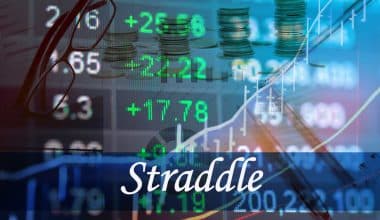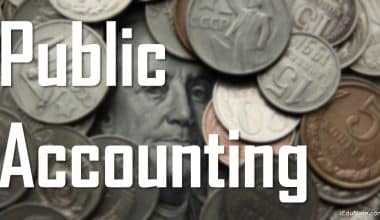Business is all about transactions, and automating them makes them even better. This is the role supply chain finance plays in the business world. The management of supply chain finance is conducted by their corresponding companies. And that is why taking a course in supply chain finance will benefit you in different ways. In this article, we will discuss supply chain finance in all its vast differences from trade finance.
What is Supply Chain Finance?
Supply chain finance is the use of financial instruments, processes, and technologies to efficiently manage the working capital and liquidity tied up in supply chain activities for cooperating business partners. It is utilized by both buyers and sellers participating in a sales transaction to reduce financing costs and boost business effectiveness. SCF approaches work by automating transactions and constantly checking the approval and settlement of bills.
It also refers to the practices that banks and other financial institutions employ to manage the funds used to finance the supply chain. Additionally, it lowers the risk for all parties involved.
Is The Supply Chain Considered Finance?
Supply chain finance is a division of trade finance. Large and medium-sized firms can obtain supply chain financing and a collection of services. For instance, the most common include loans, factoring, invoice discounting, and purchase order finance.
Is Supply Chain Finance The Same as Factoring?
Supply chain financing, in contrast to traditional factoring, which the ordering party (the customer), initiates. It aims to make it simpler and more economical for suppliers to finance their receivables.
What Are the Benefits of Supply Chain Finance?
#1. It Makes Managing Economic Instability Easier.
Instead of waiting for its substantial customers to pay its sometimes overdue payments, the supplier can send funding requests to get paid in advance. The supplier can thus carry on with business as usual, regardless of the state of the economy.
#2. It Provides Money at a Far Lower Cost.
Typically, a supply chain finance program’s discount or processing charge is much lower than the interest rate. This is because a supplier will pay for a loan when the buyer’s credit score, not the supplier’s, is used as the basis. Supply chain finance is also a real sale of receivables, even though a loan could hurt the supplier’s balance sheet. Metrics like the debt-to-equity ratio and others serve as evidence for this.
#3. It Encourages Innovation and Progress.
Suppliers must have the operating cash on hand to fulfill the escalating demand for their products and to make investments in innovations that will give them a competitive edge. Businesses should buckle down and establish plans for how they can compete and expand in a market that is rapidly changing, even though it may seem paradoxical in a downturn.
How Does Supply Chain Financing Work?
In line with this approach, buyers consent to accept supplier invoices in exchange for bank funding. SCF also obviously benefits all participants by providing short-term financing that maximizes working capital and provides liquidity to both parties.
Buyers have more time to pay down their accounts while suppliers receive their unpaid bills more swiftly. The money on either side of the dispute may be used by the parties to maintain their respective enterprises. keeping everything working well and open to future projects.
The increasing pressure on businesses in the modern world to meet their short-term liquidity needs is what is driving the demand for SCF development. SCF offers firms a flexible way to finance accounts receivable as well, whereas up to now, working capital and capital expenditures have been primarily supported. The supply chain is not damaged, and operational and commercial efficiency are significantly improved as a result. When pricing pressures, the recession, and declining demand put suppliers at increased risk, SCF quickly distributes funds.
Supply Chain Finance Management
Supply chain finance management is the discipline of viewing all of your financial processes as a whole rather than as discrete operations. The process of supply chain finance management include
- The procure-to-pay cycle
- Working capital management
- Order-to-cash cycle.
This encompasses all aspects of ordering, invoicing, reconciliation, and payment. For your supply chain to be as effective as possible and to take advantage of cost reductions along the way, financial supply chain management’s overarching objective is to gain and maintain visibility into each of these operations.
Why Is Supply Chain Finance Management Important?
The concept of supply chain finance management emerged with the advent of supply chain financing programs from the financing institution, along with new forms of payable processes and payment agreements among business partners.
Financial services from large participants and outside financial providers help boost the whole supply chain’s competitiveness and efficiency.
Open accounts significantly decrease the complexity of payment processes while enabling smaller participants to access the best credit ratings of larger participants, hence lowering their cost of capital. Overall, it improves short-term liquidity along the value chain and promotes long-term supplier-buyer ties.
Moreover, the establishment of supply chain finance management guarantees the cash flow required to keep its doors open, lights on, employees paid, and commodities created and shipped.
Supply Chain Finance Companies
#1. PrimeRevenue
The PrimeRevenue SurePay Platform is a pioneer in worldwide B2B payments, unifying the whole supply chain by automating digital payments. to lessen friction in global supply chains
PrimeRevenue is one of the supply chain finance companies committed to making early and on-time payments simple. Whether it be a small business or a large corporation employing on-time payments to inject stability into the supply chain, they are glad to have a significant and beneficial impact on businesses of all kinds throughout the world. The platform processes more than $300 billion in payments yearly.
#2. Demica
Demica’s product is simple. They have cloud-based, user-friendly platform. It enables companies and supply chain finance institutions to expand and automate their working capital solutions.
The biggest trade banks and businesses in the world run their trade finance initiatives on market-leading fintech.
They presently have programs running that total about $20 billion and cover the entire spectrum of working capital products. These initiatives, funded by a range of banks and institutional investors, enable companies to enhance their supply chain and reinvest capital to promote growth.
#3. Orbian
Orbian is the SCF provider with the longest history, having provided Supply Chain Finance (SCF) solutions for more than 20 years.
It is one of the companies with the highest expertise in supply chain finance (SCF) solutions. In 2010, it launched the first multi-bank, bank-neutral SCF scheme in Europe. In 2014, ORBIAN launched SCF for the first time in Mainland China.
The company’s universal financial structure and SCF technology platform enable it to offer complete solutions and services to clients who are multinational corporations. While reducing operational and financial concerns, its programs have nearly infinite funding possibilities. The short onboarding process guarantees top-notch customer service.
#4. Ariba
SAP Ariba is the world’s largest network for corporate trade. It combines the world’s largest online trading community with premier cloud-based tools to help businesses locate and work with a global network of partners. However, recruiting fraud is on the rise. All across the world, criminals post fake jobs using real company names. Additionally, companies occasionally ask applicants for personal details such as financial and banking information. They usually create bogus websites and emails that appear to be real because they include company logos and photos.
SAP Ariba doesn’t request money, credit card numbers, bank account details, or any other kind of personally identifiable information throughout the employment process. Additionally, SAP Ariba does not send spam emails to job seekers. Additionally, only emails with the sap.com ending are used to communicate with candidates in a formal capacity. If you receive emails from any other domain, take action.
#5. Invoiceware International
Sovos, formerly known as Invoiceware, standardizes complex compliance regulations across Latin America for some of the largest corporations in the world. They include the Coca-Cola Company, Philips, Kellogg, DuPont, and Siemens. Their regional platform, the biggest regional business network, reduces the risk and cost of maintaining compliance, allowing their clients to take advantage of government-standardized invoicing by lowering IT costs, improving supply chain efficiency, and increasing cash flow.
Invoiceware International collaborated with Sovos in 2016 and provided its understanding of the local market. In addition to its expertise, Sovos provides solutions for Value Added Tax, Sales and Use Tax, ACA Compliance, 10-series form reporting (1099), Beverage and Alcohol Compliance
#6. C2FO
The previous name for C2FO was Pollenware. C2FO is one of the supply chain finance companies that creates financial technology. It founded the first working capital market. C2FO is in charge of running the working capital market. Its administrative hub is located in Leawood, in Johnson County, Kansas.
In January 2008, Sandy Kemper, a former CEO of UMB Financial Corporation, started the company. The name was modified to C2FO, an acronym for what the market offers: collaborative cash flow optimization, in response to client feedback.
#7. GT Nexus
Infor Nexus (formerly GT Nexus), a privately held cloud supply chain platform, was founded in Oakland, California, in 1998. Businesses use it to run an on-demand platform for controlling the world’s supply chains for logistics and trade. Infor acquired GT Nexus in September 2015. Right now, Infor has a division called Infor Nexus.
The business includes operations in the Americas, Europe, and Asia, with a focus on manufacturing and retail. These include companies in the pharmaceutical, high-tech, automotive, CPG, apparel, and footwear sectors. Suppliers, financial service providers, and logistical service providers are also a part of the Infor Nexus network. Among its customers include Brooks Brothers, Sears, Adidas, Procter & Gamble, Del Monte Foods, Caterpillar Inc., Koch Industries, Abercrombie & Fitch, and Home Depot.
#8. Traxpay
Companies like Traxpay, a rapidly growing supply chain finance platform with a multi-bank approach that operates globally from Europe. To become the “Platform of Choice” for customers, suppliers, and banks, Traxpay offers businesses the ability to manage their working capital in a simple, safe, and long-term manner using all popular supply chain finance technologies.
How Do Supply Chain Finance Companies Make Money?
To pay a company’s suppliers of goods and services under a supply-chain finance arrangement, banks provide financing. Following that, the supplier gets paid early and for less than it would have otherwise.
Small suppliers can use the funds to pay their operating expenses without having to request that big businesses extend their payment terms, possibly by months.
The corporation pays the money it owes the supplier to the bank at a time that is frequently much later than it would have paid its supplier. the difference between what the bank owes the service provider for the work performed and what it retains for its use.
Supply chain finance has been around for years. After the financial crisis of 2008, many companies tried to conserve cash by using it more frequently as a means of extending payment terms with suppliers.
Supply Chain Finance Course
The supply chain finance management course emphasizes the transportation and storage of resources, information, inventory, products, and money as they travel from the place of origin to the point of purchase. The minimum time for taking a course in supply chain finance is 3 years. You can take supply chain finance course online.
- Supply Chain Management 2A: Procurement Management
- Business information systems
- Retail Management.
- Logistics Management 2A: Transportation Economics.
- Logistics Management 2B: Business Logistics.
- Supply Chain Management 2B: Inventory Management.
- Customer Relationship Management.
- Work-Integrated Learning.
- Minimum duration: Three years
Platforms Where You Can Take a Course in Supply chain Finance
There are education platforms where you can take a supply chain finance course either for free or at a monthly subscription.
- Master Control in Supply Chain Management and Logistics-edX
- Supply Chain Fundamentals: Understanding the Basics-Udemy
- Blockchain in Supply Chain Management-Udemy
- Supply Chain Management: Be Global – Coursera
- Supply Chain Foundations-Lynda
- Operations and Supply Chain Management – Udemy
- Supply Chain Technology and Systems – edX
- Supply Chains for Manufacturing – edX
- Supply Chain Risk Management – Udemy
Is It Worth Studying a Supply Chain Finance Course?
The value of a degree can be determined by how many more employment options it may open up for you. Since supply chain management is a growing and in-demand industry, investing in SCM education almost always pays off. Your objectives in the field of SCM will determine if you decide to pursue a complete degree.
Supply Chain Finance vs Trade Finance
Supply chain finance vs trade finance is a common query that concerns the differences between supply chain finance and more traditional trade financing.
While supply chain finance is a term used to characterize more contemporary and risk education initiatives. Trade finance techniques like letters of credit, bank guarantees, and documented collections are more frequently used when trading partners don’t know one another very well or at all.
Supply chain finance vs trade finance both aim to fund both domestic and international supply chains, but trade finance offers more alternatives.
.
Open account commerce, in which the buyer and seller have previously done business together, is where it will most likely be used.
What Does Trade finance vs Supply Chain Finance Mean
Supply chain finance can also involve the growth of buyer accounts. For instance, terms of payment, inventory financing, and discounting of payments. The best conditions for SCF are when the buyer has a better credit rating than the seller and can easily obtain financing.
The buyer can take advantage of this advantage to negotiate better conditions with the seller, such as an extension of the payment terms, which will enable the buyer to save money or use it more effectively. The seller benefits by having access to less expensive cash and having the option to sell its receivables in exchange.
As a result of production relocating to developing markets, logistics becoming more effective, and the simplicity and pervasiveness of global communications, globalization has resulted in the formation of internationally distributed supply chains.
For trade finance, the seller, the buyer, and their respective financial institutions must all agree to this sort of company financing (bankers). While a supplier could prefer that a buyer prepays for goods and services, a buyer might equally desire to lower their risk by insisting on the shipping paperwork.
In this situation, a bank or other financial institution might help the two parties by offering letters of credit that can be cashed in exchange for documentation like a bill of lading. Additionally, a business loan might be approved by the seller’s bank as part of trade finance based on the trading contract.
What Is the Difference Between Supply Chain Finance and Trade Finance?
Supply chain finance (SCF) is a set of practices that use modern business, financial, and IT techniques to provide value and improve operational effectiveness. To do this, three parties—the buyer, the seller, and the financial institution—must collaborate closely (FI).
The major difference between SCF and trade finance is that there is a transactional and competitive element involved in trade finance between the buyer and seller. SCF modifies the same technique so that it benefits both parties by using the leverage provided by the FI.
What Does a Supply Chain Finance Manager Do?
A unique opportunity to provide insight and analysis, decision support, and performance management to global supply chain leadership exists in the position of supply chain finance manager. The manager develops dashboards for cash and total delivered costs as well as action plans (inventory and investments).
Conclusion
Large purchasing organizations are significantly more knowledgeable about the inherent risks and resilience of their supply chains as a result of the frequent reliance on outside suppliers for crucial product components.
Working capital management has become a key metric for chief executive officers that prioritize profitable expansion. The development of Modern technology used to track and manage events in the physical supply chain provides opportunities to automate the beginning of SCF interventions.
FAQs
Is supply chain management a good career?
Yes, it’s a rewarding career because there are supply chain management job prospects. Additionally, there is a lot of potential for career advancement and supply chain roles typically pay well. Additionally, the professional path provides good job satisfaction and is not easily boring.
Is supply chain same as logistics?
The easiest way to distinguish between supply chains and logistics is to note that supply chains are in charge of the overall sourcing, processing, and delivery of goods to the final consumer, whereas logistics is only concerned with the movement and storage of goods between various supply chain organizations.
What are the 5 types of supply chain?
The 5 types of supply chain are represented at the model’s top level: plan, source, make, deliver, and return.
References
- What is Supply Chain Planning? Detailed Guide(Opens in a new browser tab)
- WHAT IS VALUE CHAIN ANALYSIS? Definition, Importance, and Examples
- Supply Chain Management: What is SCM and Why is it Important?
- Value Chain Analysis: Steps to Value Chain Analysis
- REVIEWS OF TOP SUPPLY CHAIN MANAGEMENT SOFTWARE IN 2023
- REMOTE DEPOSIT CAPTURE: How it Works, Top Software & Risk






